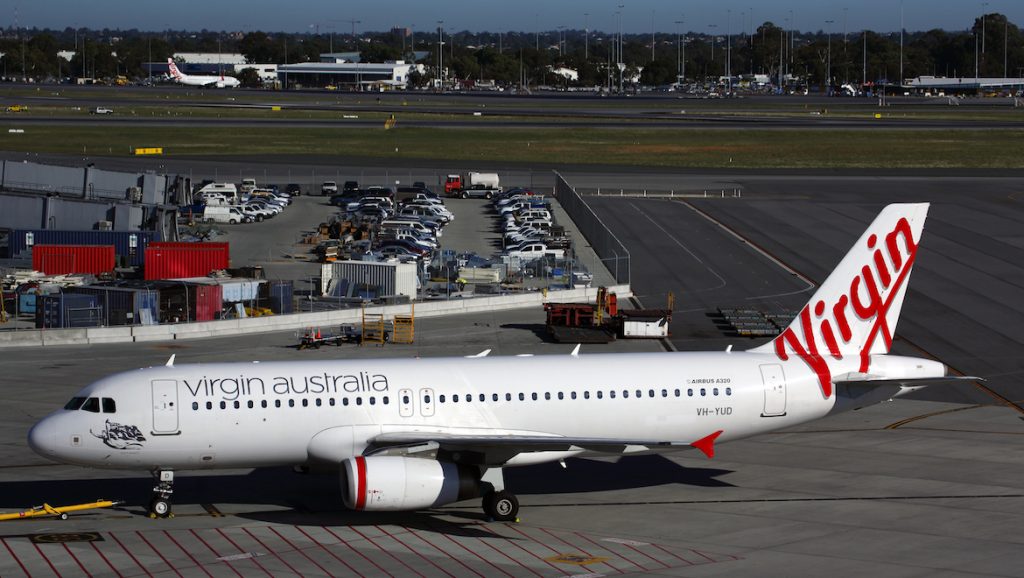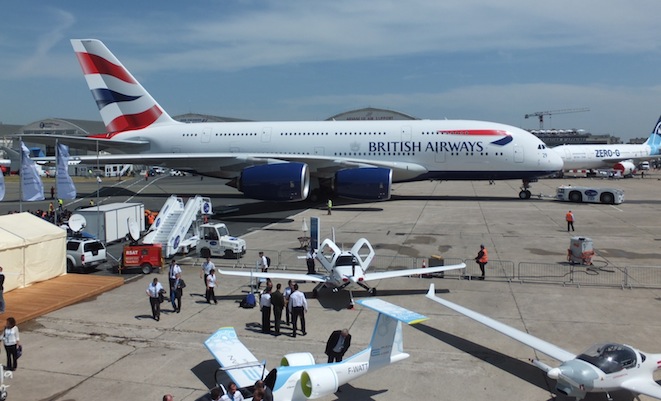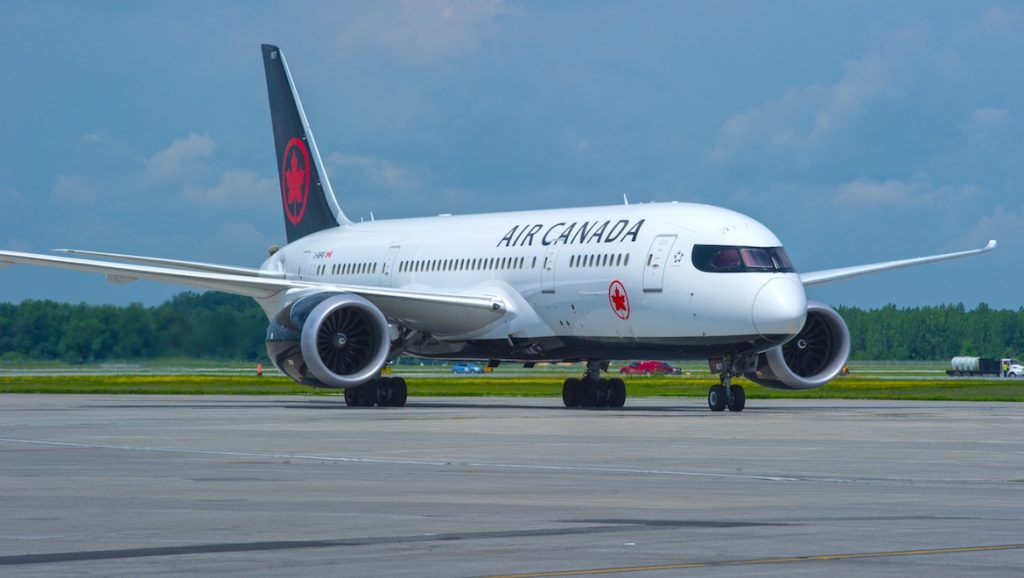
More than half of the world’s commercial aircraft has been grounded because of travel restrictions amid the ongoing global health crisis.
In late March, IATA estimated that airline revenues could plummet by $252bn, a 44 per cent decline from 2019, assuming that travel restrictions will last for up to three months. In its latest assessment in mid-April, the association projected an even bigger loss in revenue of $314bn in 2020, a 55 per cent year-on-year decline.
And the grounding of so many flights is threatening the livelihoods of tens of thousands of people in the airlines themselves and related industries.
IATA also predicts that global airlines could burn through $61bn of cash reserves in the second quarter alone, putting at risk 25 million jobs. One of the highest-profile airline casualties of the pandemic so far has been budget carrier Virgin Australia. The country’s second-largest airline after Qantas has entered into voluntary administration, a form of bankruptcy protection.
The complete collapse of Virgin Australia would affect the 10,000 people directly employed by the airline, and potentially another 6,000 people indirectly. Management consultants at Deloitte who are acting as the airline’s administrators have said they have no plans to make any of the staff redundant.
But airlines on every continent have been laying off staff in the thousands.
British Airways’ parent company, International Airlines Group (IAG), said on April 29 that the United Kingdom’s largest carrier plans to cut more than a quarter of its 45,000 employees.
Earlier this month, BA reached a deal with its union to suspend more than 22,600 staff in one of the industry’s biggest such moves since the coronavirus outbreak began in late December.
In another large-scale measure, Air Canada said it is temporarily laying off 16,500 of its staff, about half its workforce. The pain has spread to aircraft manufacturers. Boeing, which was already suffering from the fallout of two fatal crashes involving its 737 MAX aircraft, said this month that it is planning to trim its workforce by 10 per cent.
And the CEO of its European rival Airbus, Guillaume Faury, said in a statement revealing a 49 per cent plunge in earnings for the first quarter of 2020. The company had already placed about 6,000 workers on furlough.
Will government bailouts help?

Government intervention has helped to cushion the blow, though not for everyone. British Airways, for instance, is using a UK government job retention scheme to pay up to 80 per cent of the salaries of its furloughed staff. And under a special deal, staff pay will not be capped at 2,500 British pounds ($3,102) per month, unlike the standard terms of the scheme.
Air Canada is also taking advantage of its government’s wage subsidy program. Singapore Airlines is receiving a $13bn lifeline from state investment firm Temasek. But no airline rescue package is as large as the one the US is rolling out for its carriers.
Last month, the US Congress passed laws to set aside $58bn to support passenger and cargo carriers as part of a $2 trillion coronavirus rescue package to cushion US people and companies from the economic fallout of the outbreak.
But will it be enough to see the US aviation industry through until business returns to normal? The $25bn in grants that are part of the package cover payrolls through the end of September. But there is no guarantee that the pandemic will be over by then, or that people will be willing to travel in the same numbers as before it began even if new infections have been completely halted by that date.
United Airlines, for one, is warning its staff to brace for job losses if its planes remain grounded for a prolonged period. And in the case of Virgin Australia, that country’s government has refused to throw the company a lifeline. Meanwhile, Virgin Group founder Branson asked the UK government for help keeping his other airline, Virgin Atlantic, in business.
In an open letter earlier this month, Branson said the UK-based company would need British government support to “keep the airline going”. He pointed to the 600-million British pound ($74m) loan the UK has extended to rival easyJet as a possible model for government support for his firm.
The recent crash in oil prices should theoretically be giving airlines some cheer. US crude prices briefly fell far below $0 earlier this month and remain around two-thirds below their level in February.
But some companies had committed themselves to buying jet fuel when prices were higher on the assumption that prices could go higher still, a process known as hedging. But these hedges have now become wrong-way bets.
Irish low-cost carrier Ryanair, which has grounded most of its aircraft through May, said this month that its profit for the financial year just ended on March 31 will be eroded by an estimated 300 million euros ($325m) of fuel-hedging costs.
And all the trouble that airlines are facing means the likelihood of passengers like Yeow and her family getting refunds for tickets is also a dimming prospect.
Airlines globally have about $35bn worth of sold, but unused, tickets that are due for the refund in the second quarter, according to IATA’s estimates. But the industry cannot afford to refund these tickets because airlines urgently need to hold on to cash to pay salaries and other fixed costs, IATA’s de Juniac said this month.
How will airlines get flying again?

Yet now vast parts of the network have been shut down. The number of daily flights has fallen by 80% since the start of the year, and in some regions, nearly all passenger traffic has been suspended. The industry is in survival mode, with airlines, airports, and ground-handling firms all desperate to conserve their cash reserves, while their normal revenue streams have dried up.
There are obvious challenges when things are back to normal. Aircraft need to be prepared for flight, and airports made ready to receive them. Schedules need to be drawn up, and staff made available.
But there are also less predictable issues to contend with. No-one can be quite sure yet where aircraft will be allowed to fly to, or what conditions might be imposed on staff and passengers by national authorities.
There are currently around 17,000 aircraft parked up at airports around the world, according to the Cirium Fleet Analyzer. That represents about two-thirds of the global fleet.
British Airways, for instance, has planes stored at London Heathrow, at its maintenance base in Cardiff, on taxiways at regional airports such as Bournemouth, and at Chateauroux airport in France. Even while parked, these aircraft require regular maintenance. Some will have been kept ready for immediate use. Many airlines have been carrying out repatriation flights or ad-hoc cargo services. But others will take a week or longer to prepare for flight.
If all those aircraft were needed at once, getting them ready would be a formidable challenge. However, analysts say in practice this is unlikely to be the case – because most airlines will start off by operating relatively limited schedules, and many aircraft will not actually be needed for months to come.
A further significant issue is the raft of human qualifications needed to allow the industry to function. Pilots, for example, need time in the air, or in the simulator, to maintain their “ratings”, or permits to fly specific aircraft. They also need regular medical checks. Other critical staff, such as air traffic control personnel and engineers, have time-limited qualifications as well.
Although many airlines and airports are trying to ensure they still have a core of staff available with up-to-date certificates – those who are involved in dealing with repatriation and cargo flights, for example – others have been unable to continue working.
In the UK, the Civil Aviation Authority (CAA) has already taken steps to prevent a backlog of expired credentials from undermining attempts to get the planes back in the air as quickly as possible.
But while there are clear logistical problems involved with getting thousands of aircraft back into service, and ensuring there are enough pilots and technicians to go around, these are not the main issues keeping aviation executives awake at night.
The real problem, executives say, is the number of different countries that have introduced travel restrictions, and the lack of certainty over when those restrictions will be removed.
“What we are trying to do is have a global restart plan,” explains Alexandre de Juniac, director-general of the International Air Transport Association. “The main challenge is how and when the different states will lift restrictions to travel.”
He believes curbs on travel will clearly last beyond the middle of the year, and some may remain at least partially in force until the end of 2020.
He thinks domestic routes within individual countries will open up first, followed by short-haul international services. Intercontinental travel would probably follow after that, although he admits “that is a point we haven’t resolved yet”.
One area causing a great deal of uncertainty is the extent to which social distancing will be required when regular flying resumes. How will people be separated in airport lounges, in security queues, or in the airports themselves? What tests will be required, and how will they be carried out?
This is a commercial issue for both airports and airlines. For example, retail outlets and restaurants provide a lucrative source of revenue for airport operators.
IATA’s argument is that whatever measures are introduced need to be the same and implemented in a coordinated fashion.
“We need to avoid the kind of situation that followed 9/11,” says de Juniac. “Back then we saw a piling up of different kinds of security measures, and it took a very long time to put it together again in a more consistent way. And we still have different measures.”
Airlines too could be squeezed. Lufthansa is already operating services where middle seats are left unoccupied in order to allow a certain degree of social distancing on board. EasyJet – which has grounded its entire fleet – says it will do the same when it resumes flying.
As a short-term measure, this might help passengers fly with a little more confidence. But it comes at a serious cost. In order to make money, airlines need as many seats as possible to be filled on every flight. “Load factors” are particularly important for budget carriers, which typically fly with more than 90% of seats occupied.
But if middle seats are left unoccupied, the aircraft will have to fly just 65% full. This might be acceptable for a short period, but according to De Juniac, if it went on for long, “it would certainly change the way in which the industry operates”.
Ryanair’s CEO Michael O’Leary has put it more succinctly, describing the idea as “idiotic”.
Article courtesy of Airlinerwatch.com.










